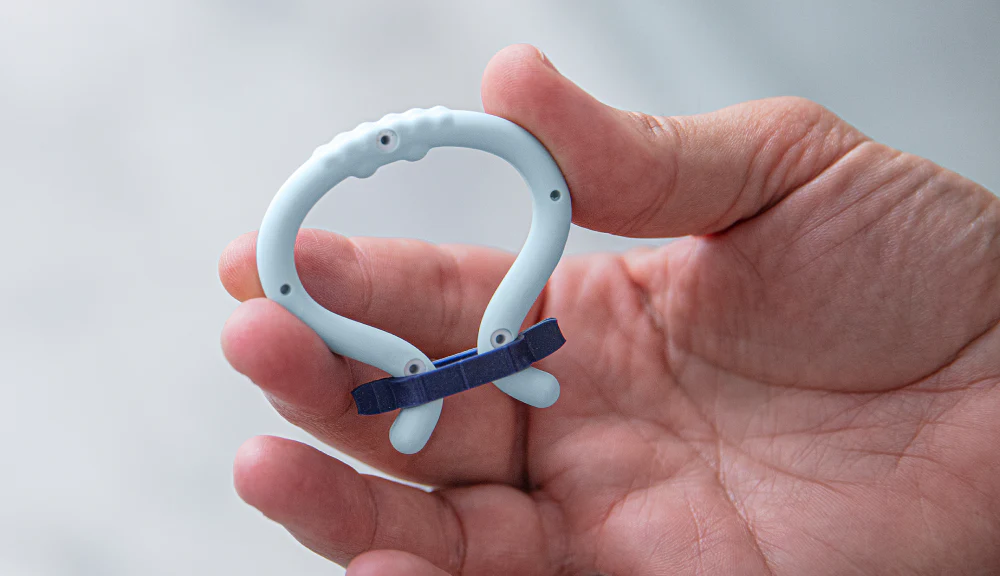What to Expect From a Bilateral Orchiectomy

Bilateral orchiectomy, or castration, is the surgical removal of both testicles. This procedure is generally performed in one of two scenarios: gender-affirming care or advanced prostate cancer treatment.
Gender-affirming surgery alters a transgender person's physical characteristics to resemble those associated with their identified gender.
Prostate cancer feeds on testosterone and uses it to spread more quickly, and testosterone is primarily produced in the testicles. Removing the testicles causes testosterone in the blood to decrease drastically, so cancer will likely grow at a slower rate. This surgery can also lessen symptoms of cancer, such as bone pain.
However, medications can effectively stop the production of testosterone, so it's uncommon to perform a bilateral orchiectomy for advanced prostate cancer treatment anymore.
For testicular cancer, the recommended surgical treatment is a radical inguinal orchiectomy, which is different from a bilateral orchiectomy in that it involves removing the testicle as well as the full spermatic cord. Typically, testicular cancer occurs in only one testicle, but in rare cases, it affects both, and they are removed.
Today, a bilateral orchiectomy is largely done in the context of gender-affirming care, according to Bobby Najari, M.D., a urologist at NYU Langone Health in New York City who has performed more than 100 gender-affirming orchiectomies since 2017.
What the procedure entails
The bilateral orchiectomy procedure is similar for both gender affirmation and advanced prostate cancer. The one nuance with gender-affirming care is the possibility that the patient would later want to undergo a vaginoplasty, or the creation of a vaginal canal, Najari said.
For this reason, there's more attention paid to preserving the skin of the scrotum and the tissue underneath to optimize future gender-affirming surgery outcomes.
When a bilateral orchiectomy is done for prostate cancer, there are no future plans to have additional surgeries, so the incisions can be made in a different location.
During a bilateral orchiectomy procedure for gender-affirming care, Najari makes an incision in the middle of the scrotum where there's a line in the skin.
"Through that one incision, you can remove both testicles and all of the structures that lead to the testicle up to where they leave the external inguinal ring, where they're leaving the inguinal canal," Najari explained. "You basically move that one incision first to one side and then to the other to remove the testicle and its structures."
A bilateral orchiectomy is considered a minor procedure that takes about an hour. The patient does not need to stay in a hospital, and it can be performed with the patient under local anesthesia. However, Najari chooses to do it under anesthesia because he thinks most patients are more comfortable in that setting.
During the first two weeks of recovery, Najari recommends patients refrain from heavy lifting, exercise and sexual activity. They are able to walk immediately after the procedure.
"I always check to see how they're healing two weeks after the procedure," he said. "At that point, I would expect them to be about 60 percent healed."
Patients are typically healed completely after three months.
Possible risks, complications and side effects
Removing both testicles equates to permanent sterilization. Patients who undergo the procedure will not be able to have genetically related children in the future unless they bank sperm ahead of time.
"You have to make sure that they are certain that they either don't want genetically related children or that they have already preserved their fertility, because there's no going back from this procedure in that regard," Najari said. "It's irreversible."
For people with prostate cancer, fertility and sperm banking do not usually come up in conversation because they are typically in their 50s or older. Most cisgender men are not interested in fathering children at that age, according to Samuel Haywood, M.D., a urologic oncologist at Cleveland Clinic.
"Theoretically, you could still ejaculate [after bilateral orchiectomy] because a lot of that fluid comes from the prostate, but it wouldn't have any sperm in it," Haywood said.
Bilateral orchiectomy has the generic risks of any surgery, namely, bleeding and infection. Those effects are very rare, though.
"I would say of the two, bleeding is the more common one, and maybe 1 percent of people experience excess bleeding," Najari said. "It can slow the recovery initially but shouldn't cause any long-term effects to their outcome."
Sperm banking is a challenging discussion to have with transgender women because gender-affirming hormones impair sperm production, Najari said.
"Generally, these patients have been on hormones for at least a year before they're coming in for a surgical consultation," he explained. "If they want to preserve sperm ahead of an orchiectomy, they generally need to come off their hormones for at least three months, which is one cycle of sperm production, in order to regain the ability to produce sperm."
This circumstance can delay surgical care if they haven't banked sperm before initiating the gender-affirming hormone therapy.
Erectile dysfunction (ED) is tied to the loss of testosterone, so a bilateral orchiectomy can lead to ED, according to Daniel Lee, M.D., an assistant professor of urologic oncology in the surgery department at the Perelman School of Medicine at the University of Pennsylvania in Philadelphia.
"I would say that ED is a significant problem for men who get either the surgery or the medication, just because when your libido and testosterone is zero, it's hard to get a spontaneous erection," Lee said. "They're not directly related to each other, but at the same time, they're very closely associated."
Many transgender women also may desire use of the penis for pleasure, which would be complicated by prostate cancer interventions.
Other potential side effects of lowered testosterone include low energy, depression and decreased libido, Haywood said.
"Some patients can get some breast pain or tenderness from having low testosterone," Haywood added.
An underused modality for prostate cancer?
Lee said he thinks the use of bilateral orchiectomy to control testosterone levels for people with advanced prostate cancer is underutilized.
"There are definitely some benefits to having the testicles removed," Lee said. "It's the fastest way to get your testosterone to zero. In people where the prostate cancer is so advanced that it's causing spine issues or affecting some of the nerves or even causing fractures along the bone in the spine, it really is beneficial."
Part of the reason this surgery is not used often is that modern medications—luteinizing hormone-releasing hormone (LHRH) agonists such as Lupron, Zoladex and Trelstar—are so effective at lowering testosterone. Their results mimic castration.
There's also a stigma for men who lose their testicles, Lee added.
"Once you get the testosterone to zero, the patient's pain levels really respond dramatically to that," Lee said, adding that there are risks involved with hormone therapies. "By doing the surgery, this can help mitigate at least some of those risks."
It's difficult to convince most cisgender men in this scenario to have their testicles removed.
"Guys don't want to be a eunuch and lose a source of their manhood, per se," Lee said.
Costs and cost-effectiveness
Most insurance companies provide plans that cover gender affirmation surgery. However, in instances where the patient is uninsured or their insurance doesn't cover the procedure, they may pay out of pocket.
Out-of-pocket costs are difficult to determine and vary widely, Najari said, adding that it depends on whether the surgery is done with anesthesia or without, and whether it's done in a hospital or an ambulatory surgery center.
The cost of gender affirmation surgery could range anywhere from about $2,000 to more than $20,000.
Though Haywood has performed a bilateral orchiectomy on only one prostate cancer patient in recent years, he said the procedure is a much less expensive form of treatment than medication.
"It can be a good way to reduce costs by doing that as opposed to giving someone medication every six months," Haywood said.
Najari agreed that bilateral orchiectomy for prostate cancer treatment is cost-effective for eliminating testosterone.
"When it's just not feasible to come into the office for an injection or to get a medication on a regular basis, that would be another situation where the bilateral orchiectomy would be very appropriate," he said.


















